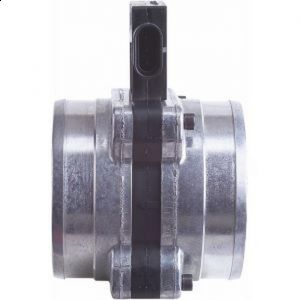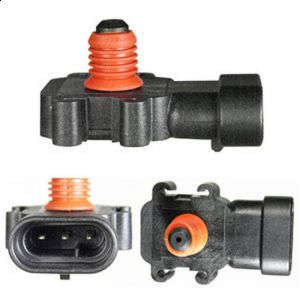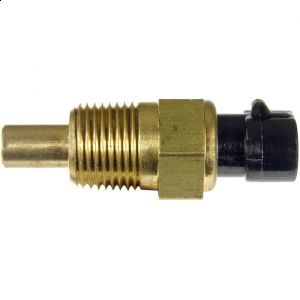MAP SENSOR CHECKS
First, make sure engine manifold vacuum is within specifications at idle. If vacuum is unusually low, there may be a vacuum leak (leaky hose connection, intake manifold or throttle body gasket, power brake booster, etc.), an exhaust restriction (clogged converter), or an EGR leak (EGR valve not closing at idle).
A low intake vacuum reading or excessive backpressure in the exhaust system can trick the MAP sensor into indicating there's a load on the engine. This may result in a rich fuel condition.
A restriction in the air intake (such as a plugged air filter), on the other hand, may produce higher than normal vacuum readings. This would result in a load low indication from the MAP sensor and possibly a lean fuel condition.
Next, check the sensor's vacuum hose for kinks or leaks. Then use a hand-held vacuum pump to check the sensor itself for leaks. The sensor should hold vacuum. Any leakage calls for replacement.
An outright failure of the MAP sensor, loss of the sensor signal due to a wiring problem, or a sensor signal that is outside the normal voltage or frequency range will usually set a diagnostic trouble code (DTC) and turn on the Check Engine light.
check harness or connectors (The sensor circuit is open or shorted.)
Engine coolant temperature sensor may be faulty .
If a MAP sensor needs to be replaced, make sure the replacement is the correct one for the application. Differences in calibration between model years and engines will affect the operation of the engine management system;
you also have a MAF sensor and the MAP as back up in case the air flow signal is lost

check that one too.
and your map sensor

and the coolant sensor

the 3 sensors , there wirings and connectors are most likely produce the P0108 when diffective.
SPONSORED LINKS
Tuesday, November 3rd, 2009 AT 4:52 PM






